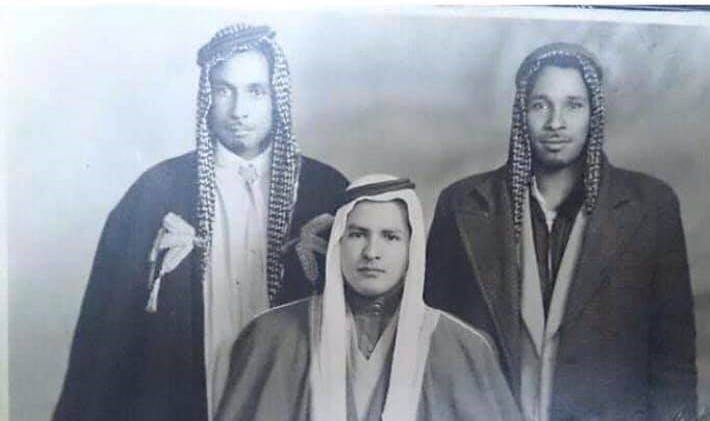A rare photo of Farhan al-‘Olayyan
A rare photo of Farhan al-‘Olayyan al-Faraj made it today on the Facebook page of the Shumaylat section of the Fadaan Bedouin tribe. He is the man on the left of the photo. The young man in the middle is Tamir son of Nuri son of Miqhim ibn Mhayd, who went on to become the Shaykh of the Fadaan tribe during the 1980s and 1990s.
Starting from the late 1950s and well into the 1980s, Farhan al-‘Olayyan, acting as the agent of the Mhayd Sheykhs, organized the purchase and the shipment to the Kingdom of Saudi Arabia of several hundreds of the best desert-bred mares in Syria, the large majority from the ‘Anazah Bedouin tribes. Most of them went as gifts to Aal Saud princes and other senior government officials in Saudi Arabia. Some of the Bedouins who would not sell willingly were coerced into selling.
In the span of those three decades, the Kingdom granted Saudi citizenship to tens of thousands of ‘Anazah Bedouins that were Syrian citizens, as well as monetary and other material incentives to settle in Saudi Arabia. All the Sba’ah and the Fad’aan, and most of the Hsinah and Wuld Ali moved to Saudi Arabia. Most settled in the northern provinces, from ‘Ar’ar to Hafr al-Batin, and in the Riyadh province. Most joined the Saudi Royal Guard, other took public service jobs. They sold their horses to Farhan al-‘Olayyan or left them behind with partners from the settled tribes of the Euphrates valley (e.g., the ‘Aqaydat, Wuldah, ‘Afadilah, etc). Farhan ended up scooping these ones up too. When in the middle 1980s, Yusuf al-Rumaihi, who was then the consul of Qatar in Damascus, started looking for good desert mares for his stud, all he could find was three or four mares which Farhan thought were too old to ship. In Saudi, the horses were used the grease the wheel of the Saudi administation and facilitate the procedures for the settlement of the ‘Anazah Bedouins there. Most were lost to future generations. The descendants of very few found their way into the Saudi Arabian studbook.

Oh, what he has done. Whether for good or ill, it certainly had the side effect of contributing to the destruction of the Arabian horse in Syria.
Edouard when you say very few found their way into the Saudi Studbook, do you mean like 4 or 5? Did the others get outcrossed to racing ,’Arabians,” in reality bred to Thoroughbreds and anglo arabs?
Best
Bruce Peek
Yes, or sold to pull carts as kadishes, but not bred from. The bedouins of Syria that relocated to Saudi were uprooted. They had had their horses and strains for dozens if not hundreds of years, and necessity drove them to part with them and move to a new nation (KSA). The horses went into the hands of people who did not value them.